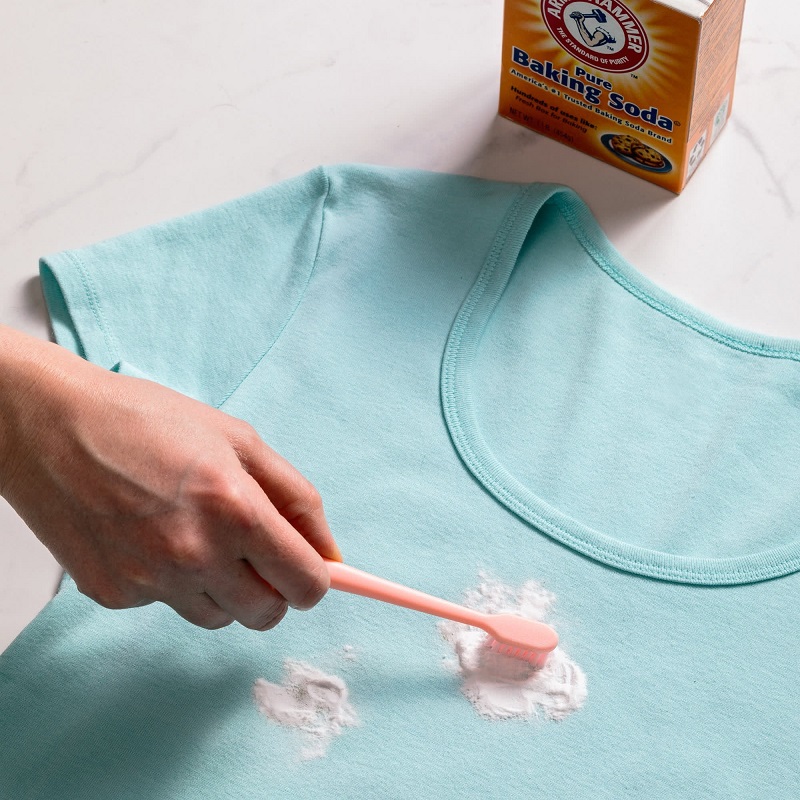Introduction to Baby Oil Stains on Clothes
Baby oil stains can be a nuisance, clinging stubbornly to fabrics. Both parents and anyone dealing with baby products know this. These stains are greasy and can appear to set into clothing fibers rapidly. Understanding how to remove baby oil from clothes efficiently is valuable. This knowledge can save you both time and money in preserving your clothes’ quality. In this guide, we will explore proven methods and helpful tips to tackle these oily adversaries effectively.
The Science behind Oil Stains
Oil stains, such as those from baby oil, pose a unique challenge for fabric care. These stains are typically made up of long chains of hydrocarbons. They adhere strongly to the fibers of clothing, which makes them difficult to remove. The greasy nature of oil creates a barrier that is both hydrophobic and lipophilic. This means it repels water but attracts more oil, complicating the stain removal process.
Types of Fabrics and Their Reactions to Oil
Different fabrics react differently to oil based on their fiber content and weave. Natural fibers like cotton and linen tend to absorb oil quickly, making stains more apparent and harder to remove. Synthetic fibers, such as polyester and nylon, are less absorbent. However, oil can still cling to the surface, creating slick patches that are noticeable. Delicate fabrics, like silk and wool, require special attention as they can be easily damaged by harsh chemicals used in some cleaning methods. Knowing how each type of fabric reacts to oil can guide the approach to effective stain removal and help maintain the quality of the clothes.
Pre-Treatment Tips for Removing Baby Oil

Before diving into the stain removal process, pre-treating baby oil stains is crucial. This step can prevent the stain from setting further and make the following cleaning steps more effective. Here are some pre-treatment tips you should consider:
- Act Quickly: The sooner you address the baby oil stain, the better. Fresh stains are more likely to be removed entirely.
- Blot the Stain: Using a clean cloth or paper towel, gently blot the excess baby oil. Avoid rubbing, as this can spread the oil deeper into the fabric.
- Apply Absorbent Powder: Sprinkle talcum powder, cornstarch, or baby powder onto the stain and let it sit for a bit. The powder helps absorb the oil, making it easier to clean.
- Rinse with Cold Water: Run cold water through the back of the stain to push the oil out of the fabric fibers.
Common Household Items That Can Help
Fortunately, you don’t need specialized products for the pre-treatment stage. Several common items found in your home can be effective in helping how to remove baby oil from clothes:
- Dish Soap: Dish soap is designed to fight grease and can break down the oil in baby oil stains.
- Baking Soda: A natural absorbent, baking soda can be used to soak up the oil before the washing process.
- White Vinegar: White vinegar can cut through the oil and can be used as a pre-rinse treatment.
- Aloe Vera Gel: Known for its soothing properties, aloe vera gel can also help to break down oil and is gentle on fabrics.
Implementing these pre-treatment tips and using household items effectively will prepare the stained clothes for a thorough cleaning and increase the likelihood of complete stain removal.
Step-by-Step Guide to Removing Baby Oil Stains
Now that we’ve covered pre-treatment tips, let’s move on to the actual removal process for baby oil stains. Here’s a straightforward, step-by-step guide to follow:
- Pre-Treat the Stain: Revisit the pre-treatment tips mentioned earlier. Blot, apply absorbent powder, and rinse with cold water.
- Apply Dish Soap: Directly apply a few drops of dish soap to the stain. Gently rub the soap into the fabric with your fingers.
- Let It Sit: Allow the dish soap to sit on the stain for 5-10 minutes.
- Wash Normally: Place the garment in the washing machine. Use the warmest water setting safe for the fabric type.
- Check the Stain: After the wash cycle, check if the stain is gone before drying. If it persists, repeat the process.
- Air Dry: Once the stain is removed, air-dry the garment to ensure no heat sets any remaining residue.
Always read clothing labels for specific washing instructions. Following these steps can significantly increase your success in knowing how to remove baby oil from clothes.
Specific Techniques for Different Fabric Types
Each fabric type demands a unique approach when it comes to stain removal:
- Cotton and Linen: These can handle more vigorous scrubbing. After dish soap application, brush gently with a soft brush before washing.
- Polyester and Nylon: Use a gentle touch. Avoid harsh scrubbing which can damage the fabric’s surface.
- Delicate Fabrics (Silk, Wool): For these, skip the brushing. Instead, use a specialized stain remover and gently blot. Consider professional cleaning for stubborn stains.
Understanding the fabric’s needs and adjusting your cleaning technique accordingly is essential. With these specific strategies, you’re equipped to handle any baby oil stain on a variety of clothing types.
Stain Removal Solutions: Homemade vs. Commercial

When it comes to removing baby oil stains from clothes, you have two main options: homemade solutions or commercial products. Each has its own set of pros and cons.
Pros and Cons of Each Type
Homemade Solutions:
- Pros:
- Cost-effective, often using items already at home.
- Eco-friendly, as they lack harsh chemicals.
- Safer for those with sensitive skin or allergies.
- Can tailor to the specific type of fabric or stain.
- Cons:
- May require more time to prepare and apply.
- Less potent than commercial options, possibly less effective on severe stains.
- Results can vary, lacking the consistency of store-bought products.
Commercial Products:
- Pros:
- Designed for convenience, ready to use immediately.
- Typically more powerful, removing tough stains efficiently.
- Consistent results, with clear usage instructions.
- Cons:
- Can be more expensive than homemade mixtures.
- Often contain chemicals that can be harsh on fabrics and the environment.
- Can cause reactions for those with skin sensitivities.
Knowing how to remove baby oil from clothes depends on the resources available to you and the specific situation of the stain. Weighing the pros and cons will help you decide the best option for your needs.
Preventive Measures to Avoid Future Stains
Preventing baby oil stains is always better than tackling them after the fact. By following some simple strategies, you can avoid the stress associated with oil stains on clothes. Here are effective measures to keep your garments spotless:
- Use Baby Oil Carefully: Apply baby oil with care, especially when you or your baby are in full clothing. Consider using a towel or cloth as a barrier.
- Treat Clothes Before Use: Add a stain repellent treatment to clothing prone to stains. This step adds a protective layer that can make future stains less likely.
- Wash Hands After Application: After applying baby oil, be sure to wash your hands before handling clothes. This prevents accidental transfer of oil to fabrics.
- Immediate Change: If you or your baby get baby oil on clothes, change the clothes right away. This prevents the oil from sitting too long and causing a stain.
- Choose the Right Fabrics: Wearing clothes made from less oil-absorbent materials when using baby oil can minimize stain risk. Choose synthetics over natural fibers when possible.
- Keep Baby Wipes Handy: For quick clean-ups, keep baby wipes nearby to immediately tackle any accidental spills on clothes.
By incorporating these preventative steps into your daily routine, you can significantly reduce the likelihood of baby oil stains and maintain the quality of your clothes. Remember, learning how to remove baby oil from clothes is invaluable, but preventing the stains altogether is the ultimate goal for clothing care.
Conclusion: Best Practices for Clothing Maintenance

Having tackled the challenge of baby oil stains, the key takeaway is that prevention and prompt action are crucial. To keep your clothes in top condition, consider these final guidelines:
- React Quickly to Spills: As soon as oil touches fabric, start the removal process. This prevents stains from setting.
- Read Labels Carefully: Follow your garment’s care instructions to avoid damage during cleaning.
- Choose the Right Treatment: Decide if a homemade solution or a commercial product is better for your stain and fabric type.
- Handle with Care: Treat delicate fabrics gently to preserve their quality while cleaning.
- Regular Maintenance: Keep your clothes fresh by treating and washing them regularly.
- Use Protective Measures: Apply a stain repellent or use protective layers like aprons when using baby oil.
Understanding how to remove baby oil from clothes takes patience and practice. With the right approach, stain removal doesn’t have to be daunting. Always aim to preserve the quality and longevity of your garments by addressing stains as soon as possible and using the most suitable cleaning method for the fabric. In essence, care for your clothes as you would any valued item—promptly, properly, and with precision.



